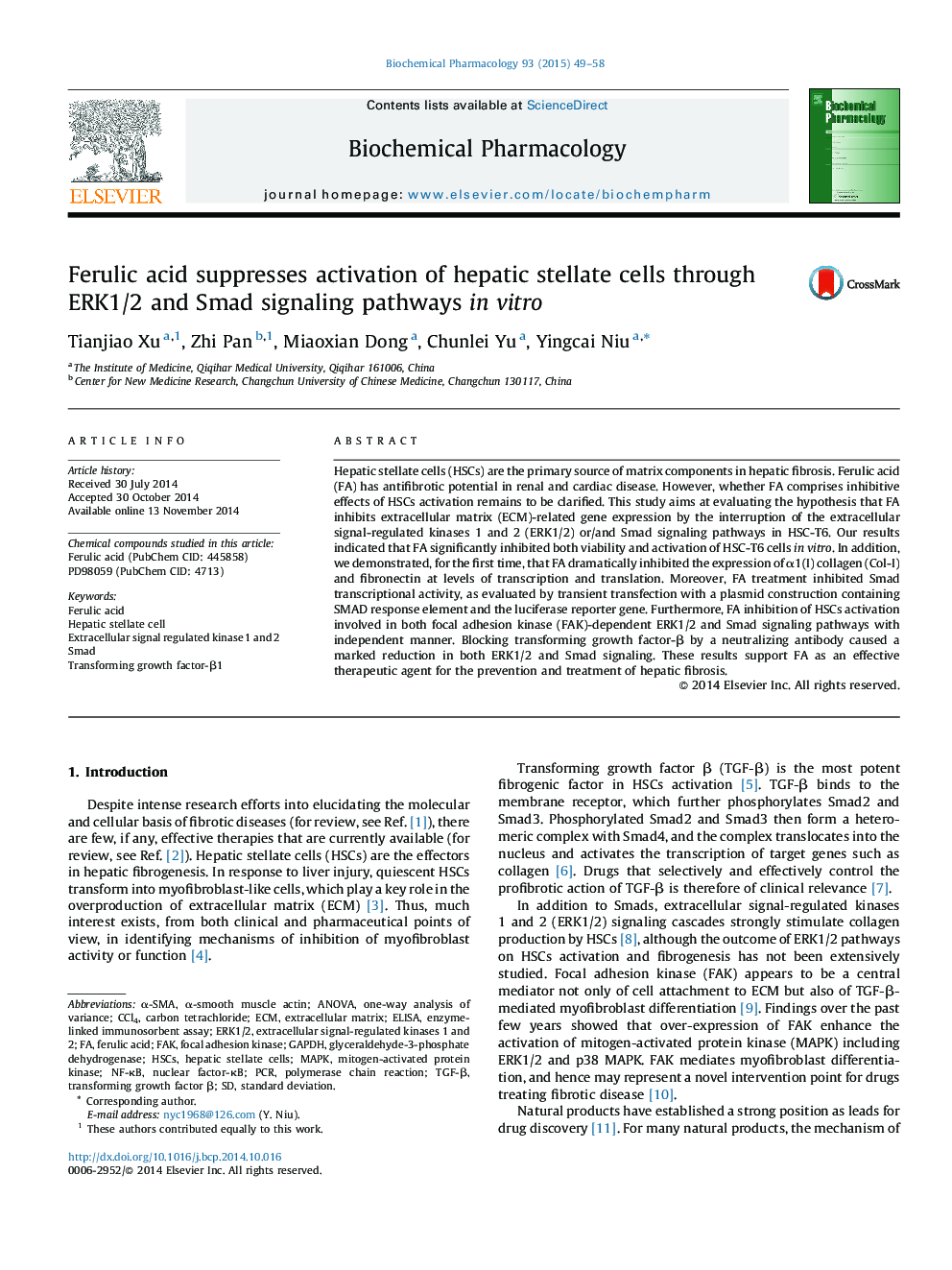| کد مقاله | کد نشریه | سال انتشار | مقاله انگلیسی | نسخه تمام متن |
|---|---|---|---|---|
| 2512232 | 1118330 | 2015 | 10 صفحه PDF | دانلود رایگان |

Hepatic stellate cells (HSCs) are the primary source of matrix components in hepatic fibrosis. Ferulic acid (FA) has antifibrotic potential in renal and cardiac disease. However, whether FA comprises inhibitive effects of HSCs activation remains to be clarified. This study aims at evaluating the hypothesis that FA inhibits extracellular matrix (ECM)-related gene expression by the interruption of the extracellular signal-regulated kinases 1 and 2 (ERK1/2) or/and Smad signaling pathways in HSC-T6. Our results indicated that FA significantly inhibited both viability and activation of HSC-T6 cells in vitro. In addition, we demonstrated, for the first time, that FA dramatically inhibited the expression of α1(I) collagen (Col-I) and fibronectin at levels of transcription and translation. Moreover, FA treatment inhibited Smad transcriptional activity, as evaluated by transient transfection with a plasmid construction containing SMAD response element and the luciferase reporter gene. Furthermore, FA inhibition of HSCs activation involved in both focal adhesion kinase (FAK)-dependent ERK1/2 and Smad signaling pathways with independent manner. Blocking transforming growth factor-β by a neutralizing antibody caused a marked reduction in both ERK1/2 and Smad signaling. These results support FA as an effective therapeutic agent for the prevention and treatment of hepatic fibrosis.
Figure optionsDownload as PowerPoint slide
Journal: Biochemical Pharmacology - Volume 93, Issue 1, 1 January 2015, Pages 49–58